Pakistan’s Youth: The Light at the End of the Tunnel
The so-called youth bulge in Pakistan has now become visible.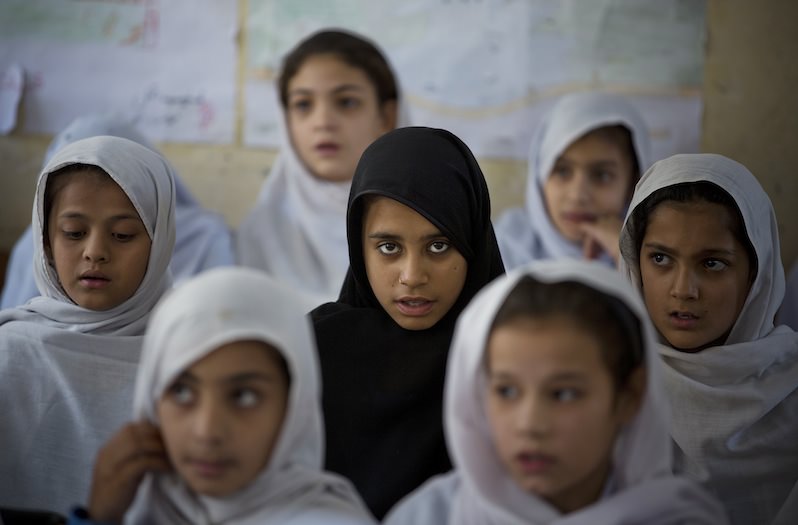 Students attend school in Swat, Pakistan, the hometown of Taliban attack survivor and Nobel Prize winner Malala Yousafzai, on Oct 11. AP/B.K. Bangash
Students attend school in Swat, Pakistan, the hometown of Taliban attack survivor and Nobel Prize winner Malala Yousafzai, on Oct 11. AP/B.K. Bangash
Editor’s note: This piece by Zubeida Mustafa is the first in a three-part series about the unique challenges and opportunities that Pakistani youth are facing that were written for the Global Voices: Truthdig Women Reporting project (click here for more information about Global Voices). The next two stories, an article and an interview, were written by Nudrat Kamal.
The so-called youth bulge in Pakistan has now become visible. One young woman making news around the world of late is 17-year-old Malala Yusufzai, who was named the youngest-ever winner of the Nobel Peace Prize in early October.
Not that Pakistan has not been a young country for several decades. The country’s high population growth rate over the 1980s and 1990s means more than a quarter of the country’s population of 182 million today is between 15 and 29 years of age, which is how youth is defined by the United Nations. However, it is only in times of turbulence, as Pakistan is experiencing at present, that the youth’s presence has become pronounced. Two democratic elections in a row – in 2008 and 2013 — have focused public attention on young voters.
In the May 2013 general election it is said that about a third of the registered voters were under 29 (that worked out to 25 million in absolute numbers) and many of them would be casting ballots for the first time. The political parties took note, and all of them included plans for the youth in their election manifestos.
As a result of the parties’ efforts to mobilize young voters, the turnout was higher than it had been in over two decades. But no party could claim that the youth were the turning point for their fortunes. In the absence of age-related vote analysis by the Election Commission of Pakistan, one has to depend on public opinion surveys. According to Gallup Pakistan, of the total support won by the PTI (Pakistan Tehreek-i-Insaf) led by Imran Khan, the former captain of the national cricket team and onetime heartthrob, only 26 percent was from first-time voters. The PTI, which is one of the parties that was protesting in Islamabad in August, collected the second-highest number of votes in the 2013 election. The party that got into office, the PML of Prime Minister Nawaz Sharif, had 37 percent of its support from the youth. In other words, age made no impact on the election results for any specific party.
How does one explain this phenomenon? The tally conveys a sense of hopelessness and cynicism in a large majority of the young people in Pakistan who have nothing to look forward to and feel they have no control over their lives. That is dangerous. A volatile mass of discontented humanity does not make for peace and stability in any country. A British Council report issued on the eve of the 2013 election noted, “When the youth were asked about the most important events in their lifetimes, they pointed towards natural disasters, such as the recent earthquake and floods. The assassination of Benazir Bhutto tops the list.”
This same report titled The Next Generation in Pakistan (April 2013) said a quarter of all young people in Pakistan have been directly affected by violence, or have witnessed a serious violent event. In the (war-affected) Federally Administered Tribal Areas, this figure rises to 62 percent, compared to what it was before.
This should be an eye-opener for policymakers who have neglected Pakistan’s youth. It is the young who are at most serious risk of being radicalized, with 38 percent describing Islamic Shariah as being the best system for the country and 32 percent supporting military rule. Only 29 percent uphold the ideal of democracy, according to the British Council report.
Described as “a generation on a knife-edge,” young Pakistanis’ perception of various institutions as described by the British Council report is not very reassuring either. It is a clear indication of the direction in which the country is moving. Thus 77 percent hold a very favorable view of the army while religious centers have an approval rating of 74 percent. The structures of democracy are viewed with disdain — the National Assembly (legislature) received the approval of 14 percent, while political parties were worst off with only an 11 percent favorable vote.
The most feasible strategy for pulling out young people in any society from a morass of hopelessness is to provide them with some occupation. In a country torn by poverty, a productive job that also fetches them a livelihood is the best option. Employment has a human dimension. A person gainfully employed who also wins appreciation for his skills and contributions is less likely to be violent and destructive.
But jobs require a person to have the necessary skills and expertise — mainly education and training. This is the area in which Pakistan has miserably failed its youth. Although the young men and women from the affluent classes have found quality education in the private sector within their means, the others have been less fortunate. The state of education in Pakistan has been on a downslide. This has been a tragic story. Denying access to education to children is a gross violation of Article 25-A of the Constitution of Pakistan, which provides for free and compulsory education to young people 5 to 16 years of age. It is also the negation of various international human rights instruments to which the country is a signatory. Without education, the youth cannot achieve their maximum human, intellectual and personality development necessary for the optimal blossoming of their potential.
It is, therefore, not surprising that youth unemployment in Pakistan runs a high 28 percent, according to the International Labor Organization’s Global Employment Trends for Youth 2013: A Generation at Risk, ILO, Geneva. With only 22 percent of youth being literate and fewer still having received 10 years of schooling, their employment status is not ideal.
There is an urgent need to educate the young and provide them training to make them employable. There is also a need to stimulate the economy so that jobs are created in large numbers. Such measures could change the future of the youth, who could conversely bring a turnaround in the country’s fortunes.
But even that is not enough. There is also a need to mobilize and motivate Pakistan’s up-and-coming generations to involve them in the community and provide them a goal in life. It is important to boost their self-esteem and engage them in activities that give them recognition as useful members of society — even when they are jobless. Through these means alone they will have a sense of control over their lives. It will be good for their emotional and mental well-being, and that, in turn, will keep them away from destructive activities that give them a false sense of pride.
There is always light at the end of the tunnel. For Pakistan, this light comes from the lamp lit by those small bands of youth who are struggling to mobilize other compatriots of their age on a self-help basis to give them strength. In the process, they are bettering society and improving their own lives. They give us hope, for they are not likely to opt for violence or radicalization. They are rational and enlightened.
In the accompanying articles, Nudrat Kamal, herself a young journalist, meets youth who are making a vital contribution to society. They, like Kamal, inspire us.
Your support matters…Independent journalism is under threat and overshadowed by heavily funded mainstream media.
You can help level the playing field. Become a member.
Your tax-deductible contribution keeps us digging beneath the headlines to give you thought-provoking, investigative reporting and analysis that unearths what's really happening- without compromise.
Give today to support our courageous, independent journalists.
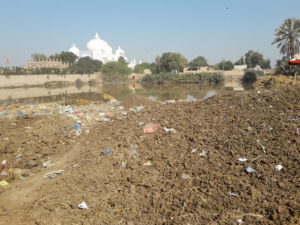
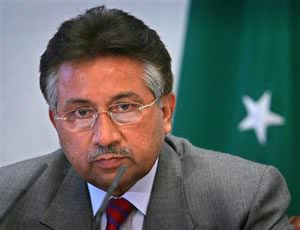
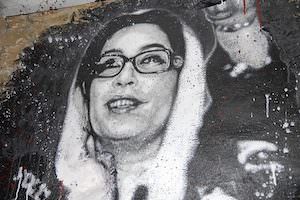
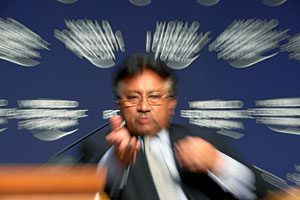
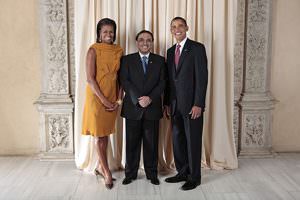
You need to be a supporter to comment.
There are currently no responses to this article.
Be the first to respond.